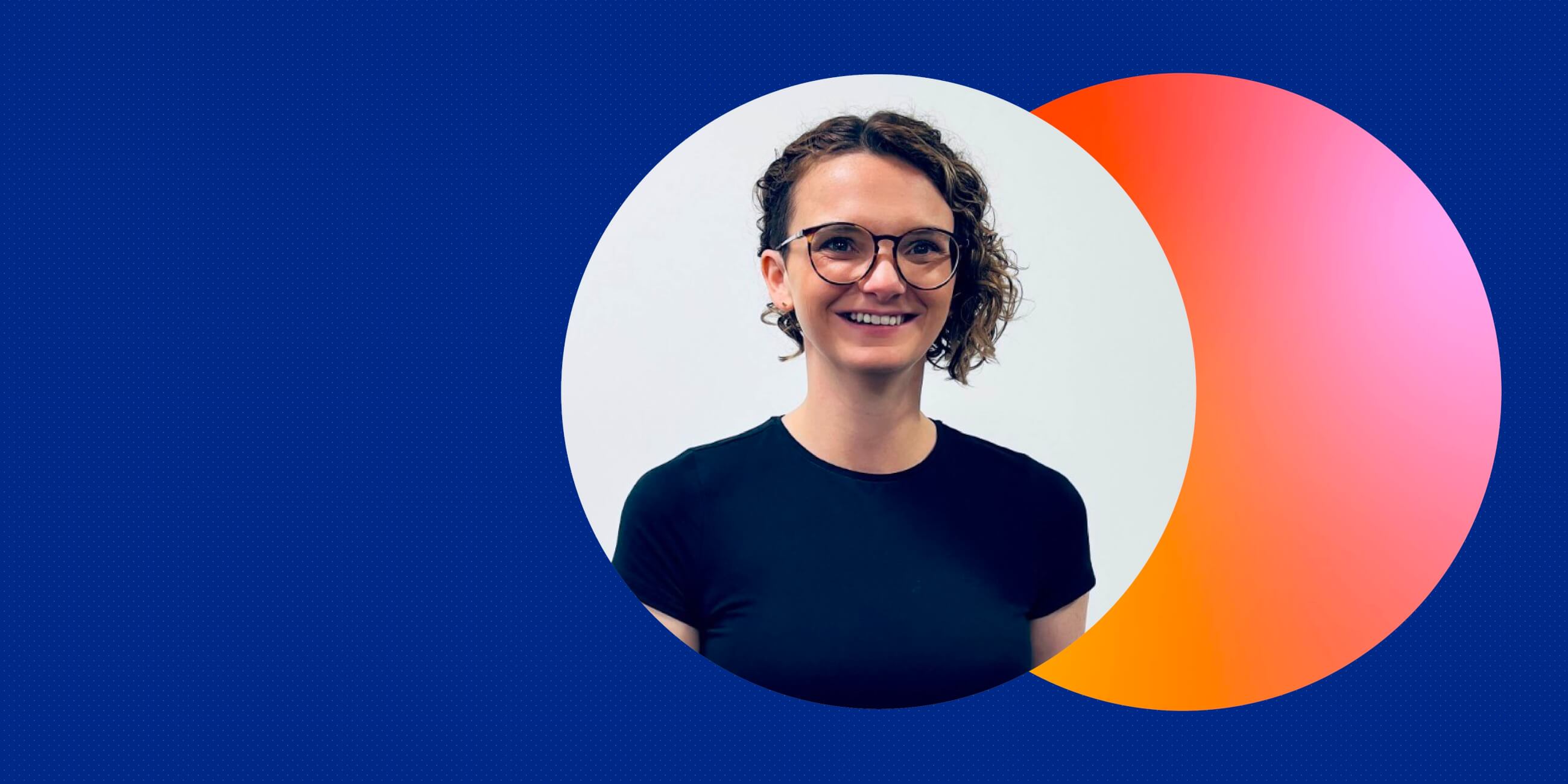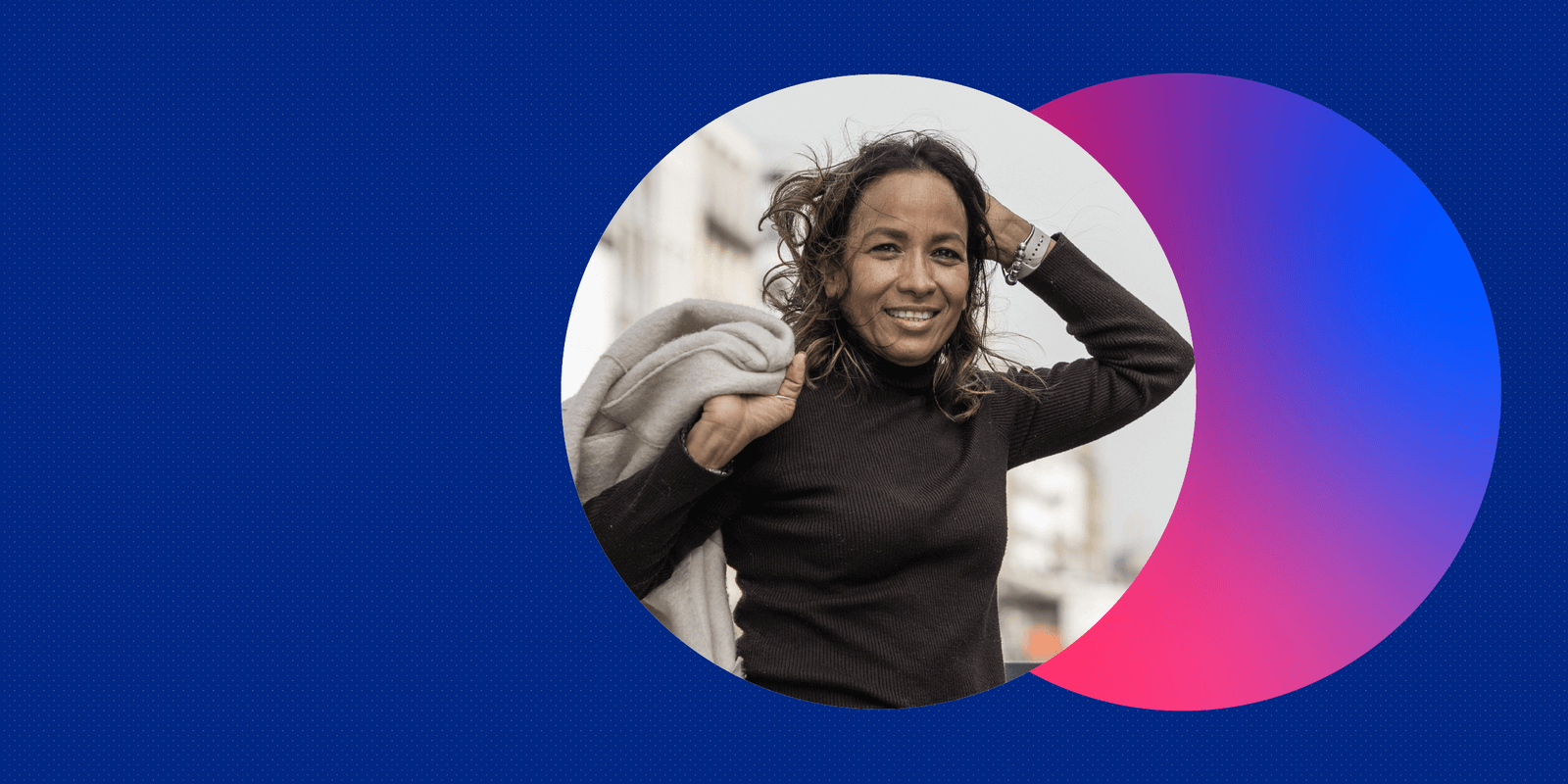Meet Emily Digweed: a digital marketer turned UX manager
After ten years in marketing, Emily Digweed decided to specialise in a topic she was truly passionate about: understanding the psychology behind human behaviour. This set her on the path to UX. And, subsequently, the path to leadership.
Today, Emily is a UX Manager at Damteq, a specialist growth marketing agency where she leads cross-functional teams and helps shape digital experiences for a wide range of clients.
So how did she pivot from marketing to UX leadership?
Emily credits her success, in part, to the thorough education and training she received from the UX Design Institute. After completing not only the Professional Diploma in UX Design, but also the Professional Certificates in UI Design and Content Design, Emily gained both the skills and confidence she needed to transform her career.
In her own words:
The Professional Diploma in UX Design was the stepping stone to my career in UX. It gave me the knowledge and practical skills I needed to get a job and step into a management position.
Emily’s story is a great testament to the power of transferable skills, continuous learning, and the courage to make a change. So let’s dive deeper into how she made it happen.
From marketing to UX
Pursuing passions and building on a decade of experience
Emily started her career in digital marketing, where she spent a decade honing her skills in strategy, content creation, and user engagement. But, over time, she found herself increasingly drawn to the psychology aspect of her work, understanding how and why people engage in the digital realm.
“I worked in marketing for 10 years prior to moving into UX. I realised that what I loved about marketing was understanding how people behave online, and what drives us as humans to make the decisions we do. After 10 years, I wanted to specialise in something I was passionate about, and after some research, I discovered UX as a discipline.”
Note that Emily’s pivot into UX wasn’t about starting from scratch, it was about building on what she already knew and honing in on her passion. She had years of experience in understanding audiences and creating content for specific target groups, and this user-centric background gave her a strong foundation for a career in UX.
These kinds of transferable skills are an oft-underestimated superpower when it comes to switching careers. In fact, a study by the UX Design Institute found that the majority of UX professionals (over 75%) are career-changers.
The UX industry thrives on unique perspectives, and the best UX designers come from all different educational and professional backgrounds. As Emily’s journey goes to show, it’s all about leveraging your existing skills and experience while learning the ropes of UX. That’s a powerful recipe for success!
On the topic of learning UX: Emily’s next step was to find a UX design course. So how did she land on the UX Design Institute? Let’s find out.
Navigating the overwhelming world of UX education
Why Emily chose the UX Design Institute
Once she discovered UX, Emily started researching how to break into the field. The options were overwhelming: from unregulated bootcamps to informal courses, but she wanted something credible, structured and practical. That’s what led her to the UX Design Institute.
“After exploring and researching the topic of UX, I came across the UX Design Institute and their Professional Diploma in UX Design. The university credit-rating was really important to me, as there were many bootcamps out there that didn’t provide this. It gave the course a legitimacy I hadn’t found elsewhere. After speaking to one of the advisors about the curriculum, I knew that the UX Design Institute was the route I wanted to take.”
The university credit-rating was ultimately a deciding factor in Emily’s decision. All UX Design Institute courses are credit-rated by Glasgow Caledonian University, an official endorsement that speaks to a level of academic rigour and quality assurance that many other courses don’t offer. Not only does this ensure an effective learning experience; it also helps graduates stand out on the job market.
Flexibility was also essential. Emily completed the course while working full-time and she was grateful for the supportive structure and realistic pace of the program.
Speaking of her experience, Emily says:
I loved the range of resources I was given to expand upon my learning outside the boundaries of lessons. Webinars with industry experts, career guidance and a community of UX professionals in a Slack channel, who share findings and latest research with one another.
From theory to real-world value
Gaining practical skills, building a strong portfolio and landing a UX role
Shortly after completing the Professional Diploma in UX Design, Emily landed her first UX role as a UX Specialist at Damteq, a fast-paced growth marketing agency.
Reflecting back on the hiring process, she recalls just how pivotal the diploma was in helping her secure the role:
“The Professional Diploma in UX Design was the stepping stone to my career in UX. It gave me the knowledge and practical skills I needed to get a job. I went to an interview with the portfolio of work I created during my course, and was offered the job a few days later.”
The hands-on, project-based nature of the course meant that Emily wasn’t just learning theory, she was developing real-world skills and building a strong portfolio that employers could immediately recognise as relevant and valuable.
While many courses can teach you the theory of UX, employers are ultimately looking for candidates who can thrive in a real-world setting, so the practical experience Emily gained on the course was absolutely critical, taking her from aspiring UXer to hired professional.
But she didn’t stop there. Even after she’d broken into UX, Emily was keen to keep learning and honing her craft, so here’s what she did next.
The power of continuous learning and a diverse skill set
Why Emily decided to take multiple UX courses
After starting her role as UX Specialist at Damteq, Emily soon realised that additional skills could help her really thrive in her new position. So, having thoroughly enjoyed her experience on the UX course, she returned to the UX Design Institute in 2022 to complete the Professional Certificate in UI Design.
Then, in 2024, she added a third credential to her name: the Professional Certificate in Content Design. She explains:
“I was so impressed with the learning process at the UX Design Institute that I later went on to complete Professional Certificates in UI Design and Content Design. I decided to take the UI Design course as I was working with designers at the time and found what they designed fascinating. I wanted to help where I could with specific elements of websites and apps we were working with, so the UI Design course gave me the foundations I needed to take that leap and support the team.
Then, in late 2023, I was excited to hear that the UX Design Institute was releasing a content design course. With my previous experience as a Content Marketer for a global SaaS company earlier on in my career, I was really excited to see how I could use my skills in content and expand upon them to create memorable experiences for our clients.”
In a fast-evolving field like UX, Emily’s story underscores the importance of continuous learning. By this point, she was a true UX all-rounder. And, the breadth and diversity of her skill set ultimately enabled her to progress into a leadership position.
Transitioning into a leadership role
How Emily leveraged her new skills and qualifications to get promoted to UX Manager
By 2024, Emily Digweed had been promoted to UX Manager at the same agency, a move she attributes directly to her expanding skill set and deeper UX expertise.
“In my role as UX Specialist, I was working with clients in a variety of different industries every day. The additional courses I undertook gave me the knowledge to step into a management position at my place of work, educate other teams on the importance of UX, and develop our internal teams.”
Now in a leadership position, Emily’s career is going from strength to strength. Her background in marketing, combined with her specialist training across UX, UI, and content design, allows her to lead teams with a holistic understanding of user experience and to advocate for UX at every level of the organisation.
Transform your career with in-demand UX skills
If there’s one thing we can learn from Emily Digweed’s story, it’s that success isn’t linear. There’s no one-size-fits-all pathway into UX, and there’s no ‘right’ or ‘wrong’ route into the field. If you can leverage your existing skills and demonstrate practical UX proficiency and a user-first mindset, you’re well on your way to a successful career in UX.
And when it comes to learning the essential UX skills, training with a credible, practical, and up-to-date curriculum is key. Whether you want to specialize in a niche like content design or UX research, or focus on UX as a whole, the UX Design Institute’s programs will help you learn flexibly, thoroughly and in line with industry requirements.
You’ll find all available programs on the UX Design Institute website. And, for more career-change insights and inspiration, check out the following:
- From sales to UX consulting: Kim’s career transformation with the UX Design Institute
- UX Design Institute reviews: hear from our students
- Is the UX job market oversaturated? An in-depth analysis and future outlook




